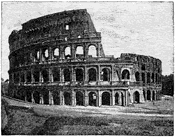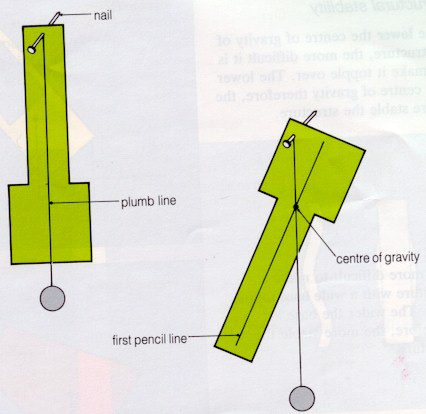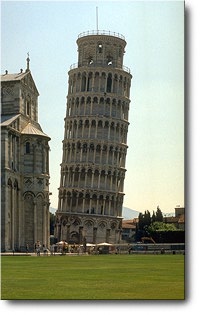 Structures
Structures Structures
Structures
Stability
"Alphonse is tipping back in his chair," complained Hortense.
"Yeah, Alphonse always tips back in his chair. We want him to stop. Just tell him to put all four legs on the floor!"
We used to hear this conversation almost daily. So what were the children in Ms Friesen and Dr. Clifford's class so upset about?
Well it had everything to do with stability and strength. They were concerned about the chair and Alphonse. You see the chair was not designed to withstand the type of forces Alphonse exerted upon it when he rocked back on it. It did not have that type of strength. And by tipping back in the chair, Alphonse was in a very unstable position. When the chair sat upright on all four legs, it was stable. As it is tilted back onto the two back legs, the structural system lost its equilibrium, its centre of gravity shifted outside of its base, it was unstable. The children were concerned because they knew that at a certain point the whole system would become so unstable that it would fail. Gravity would win and Alphonse would end up on the floor of the classroom again.
A structure that will not topple over easily when acted upon by a force is called a stable structure. All objects have a point at which we can consider all their mass to be located. The position of this point affects the stability of the object. To gain a better understanding of stability, it is necessary to understand centre of gravity.
Stability and the Centre of Gravity
Try to balance a ruler on your finger. The ruler will topple and fall off. It does this because the pull of gravity on the material to the right and to the left of your finger is not equal. It is the 'pull of gravity' acting on a substance which gives it its weight. (Weight is a force which we measure in newtons).
As a frame structure rests on the ground it is pulled down towards the Earth by gravity. Actually each member within the structure is also being pulled down by gravity and within each member are many little particles that are also acted upon by gravity. An object is balanced when its centre of gravity and its point of support lie on a vertical line. The forces on each side are balanced. The object is in equilibrium.
To balance the ruler you must find the point at which the pull of gravity (or weight) acting to the right and to the left of your finger is equal. When you have done this you have found the centre of gravity.
The centre of gravity of a ruler is in the middle of it. The centre of gravity of a sphere is at its centre. But the centre of gravity of some objects is outside them. A boomerang is a good example of an object whose centre of gravity is not inside it. When the bommerang spins, it spins about its centre of gravity.
A structure is stable if its centre of gravity lies above its base. An object is unstable when its centre of gravity lies outside its base. In other words, an object is unstable if a line drawn between its centre of gravity and the centre of the Earth does not pass through its base.
A stable object becomes unstable when its has been tilted so far that any more tilt starts to lower the centre of gravity. The critical point is reached when the centre of gravity is vertically above the edge of the base.
There are two ways of making an object more stable. One way is to lower its centre of gravity. Racing cars have very low centres of gravity, so that they are less likely to roll over enven when cornering at high speeds.
The other way is to make the base of the object wider. Racing cars have very wide bases with the wheels far apart from each other.
Assignment:
Fix The Leaning Tower of Pisa Finding Centres of Gravity
You will find your assignment here.
Hand in your lab for marking. When you get it back you need to make any corrections or additions and place it in your design portfolio.
![]()
 The weight of an object is the force due to gravity, when the object is at rest.
The weight of an object is the force due to gravity, when the object is at rest.

| Notes and Assignments | Project Requirements
Project Overview | Design Process | Design Report | Design Portfolio |
Getting Started |